Aaron Dessner on The National’s new album Sleep Well Beast, their studio and selected songs' personal origins
“This music, maybe it’s the last National album”
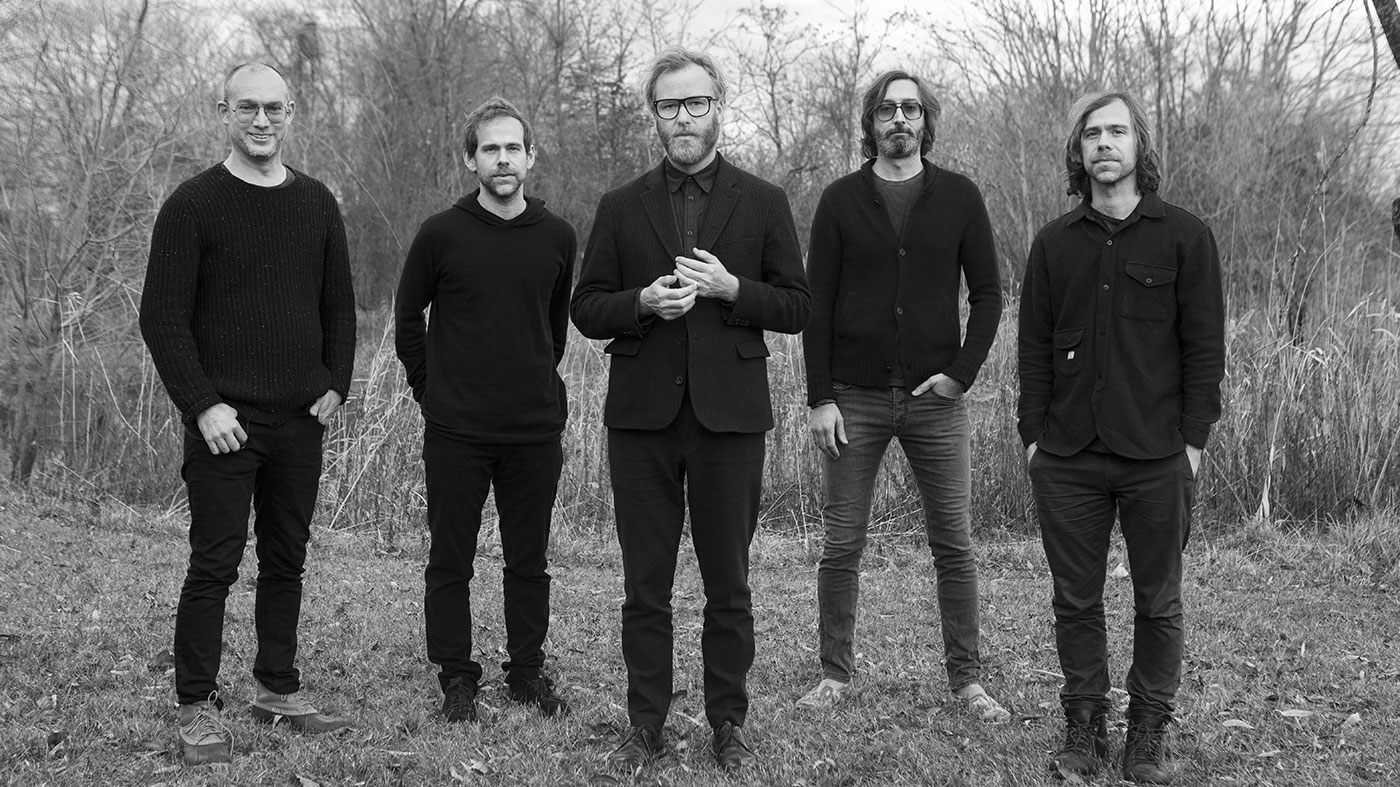
Introduction
By now we think we know what a National song sounds like. The frenetic drums, the softly honed pianos and fuzzy, line-drawn guitars, all framed in Matt Berninger’s throat-catching vignettes of domestic calamity. Now the band’s seventh studio effort Sleep Well Beast, four years in production, has seen them purposefully twist their template: incorporating synths, guitar solos and spacious arrangements - even building their own studio - in order to widen that definition.
We joke that our songs are like ugly ducklings. They take a little while to fall in love with
“People call our albums ‘growers’,” says the group’s quietly-spoken guitarist and producer Aaron Dessner. “I don’t know if I’d totally agree with that, but there is something in the way we arrange our songs, we don’t go for the obvious hooks. We joke that our songs are like ugly ducklings. They take a little while to fall in love with, but eventually they become these awkward anthems.”
The irony, of course, for a band that so ably specialise in defeat, is that time has ultimately proven The National victors - and we suspect it will again on Sleep Well Beast. MusicRadar spoke to Aaron about the band’s desire for progress, the deeply personal core of selected songs and how a new studio in the Hudson Valley saved some friendships.
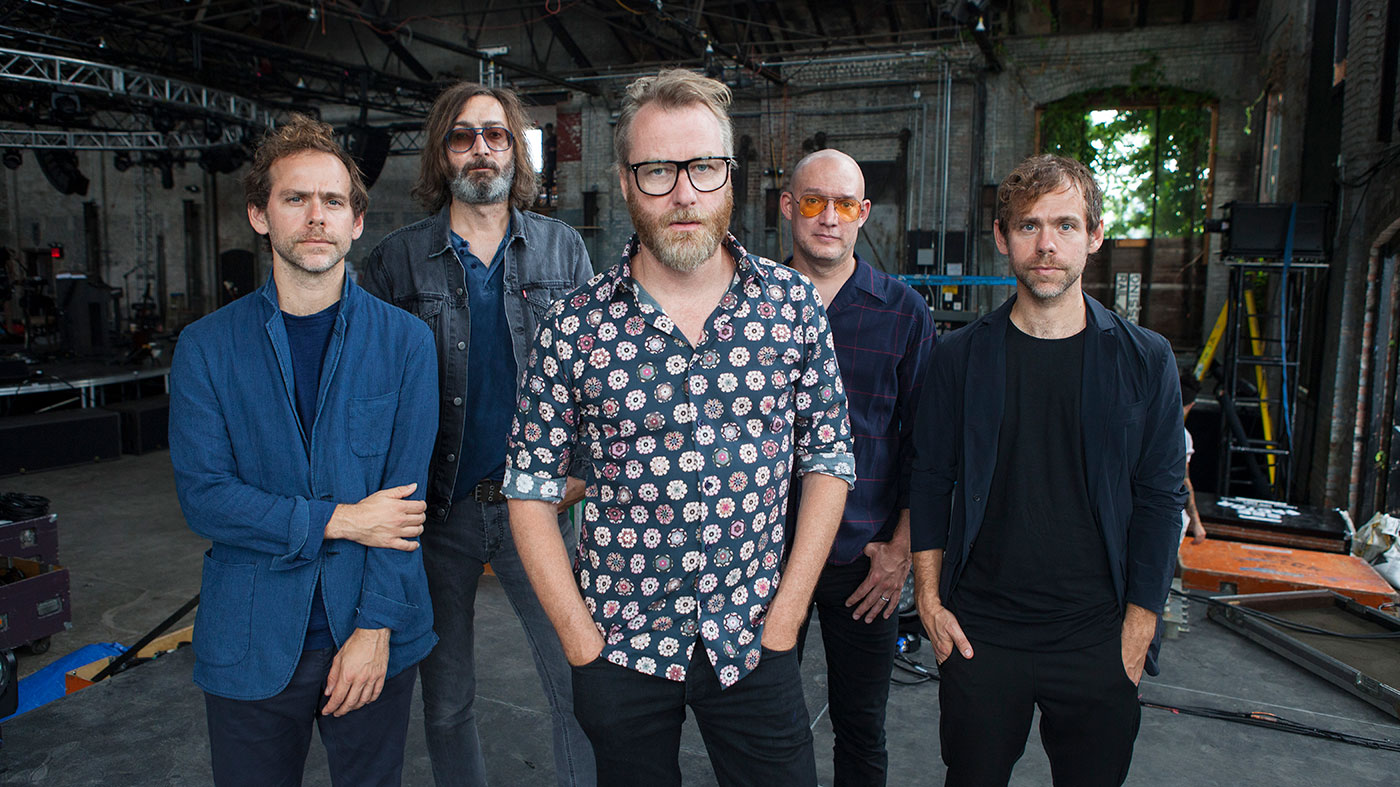
Four years
You took four years to make this record and experimented heavily. There’s clearly an element of very conscious change occurring. Why now?
“Well, we’d made four - what I consider to be great - records in a row in Alligator, Boxer, High Violet and Trouble Will Find Me. Each one felt like a distillation of the past, like it was becoming more focussed and more graceful. With Trouble Will Find Me it felt like we had arrived somewhere that was a more beautiful, more relaxed place, articulated in a baroque sound. Then we just wanted to throw it all to the wind and be more reckless.
Nobody’s delusional or in love with our own shadow, so we’re all thinking, ‘We’ve got to push this forward now
“Bryce and I talked a lot about pushing each other musically and allowing more space and improvisation. [For instance] we always played guitar solos live and we always played them as kids, but on the record, it felt like it would be too indulgent. On this one, there was just more room for that.
“Nobody wanted to make the same album again, so it had to be something new or greater than we’d done before. Otherwise I don’t know that we would make another album. We’ve been lucky to keep progressing, but nobody’s delusional or in love with our own shadow, so we’re all thinking, ‘We’ve got to push this forward now. How can we do it?’”
Let’s talk about your new studio, Long Pond. What worked for you about other rooms that you wanted to channel there?
“I think of it basically as a combination of the garage studio that we used to have in Brooklyn and a church. I like the dimensions of a church just because of what it does with the room sound, but also in allowing certain frequencies to escape up into the rafters.
At Long Pond you feel like you’re on vacation and that really takes a lot of the tension and anxiety out of the process
“We designed it to be open plan, mainly to allow it to be a collaborative space, so it would have the fidelity of a great mixing room, but also work as a tracking room and it would have a large isolation booth that was big enough for Brian [Devendorf] to play drums in. Then the whole building has a conduit running through it so you can plug in anywhere in the building, with an amp or a video monitor - there’s over a hundred lines in the building.
“Jeff Hedback did the acoustical design and Erlend Neumann was the architect. We also used the same acoustical cedar batten that my brother in law Ole Sondresen designed for our studio in Brooklyn, but again just on a large scale.
“The other thing is the nature. The studio’s called Long Pond because this beautiful spring-fed pond wraps around it and there’s a lot of glass and you’re looking out of it to the Berkshire Mountains. You feel like you’re on vacation and that really takes a lot of the tension and anxiety out of the process and that proved to be great for the band - we were rebuilding friendships.”
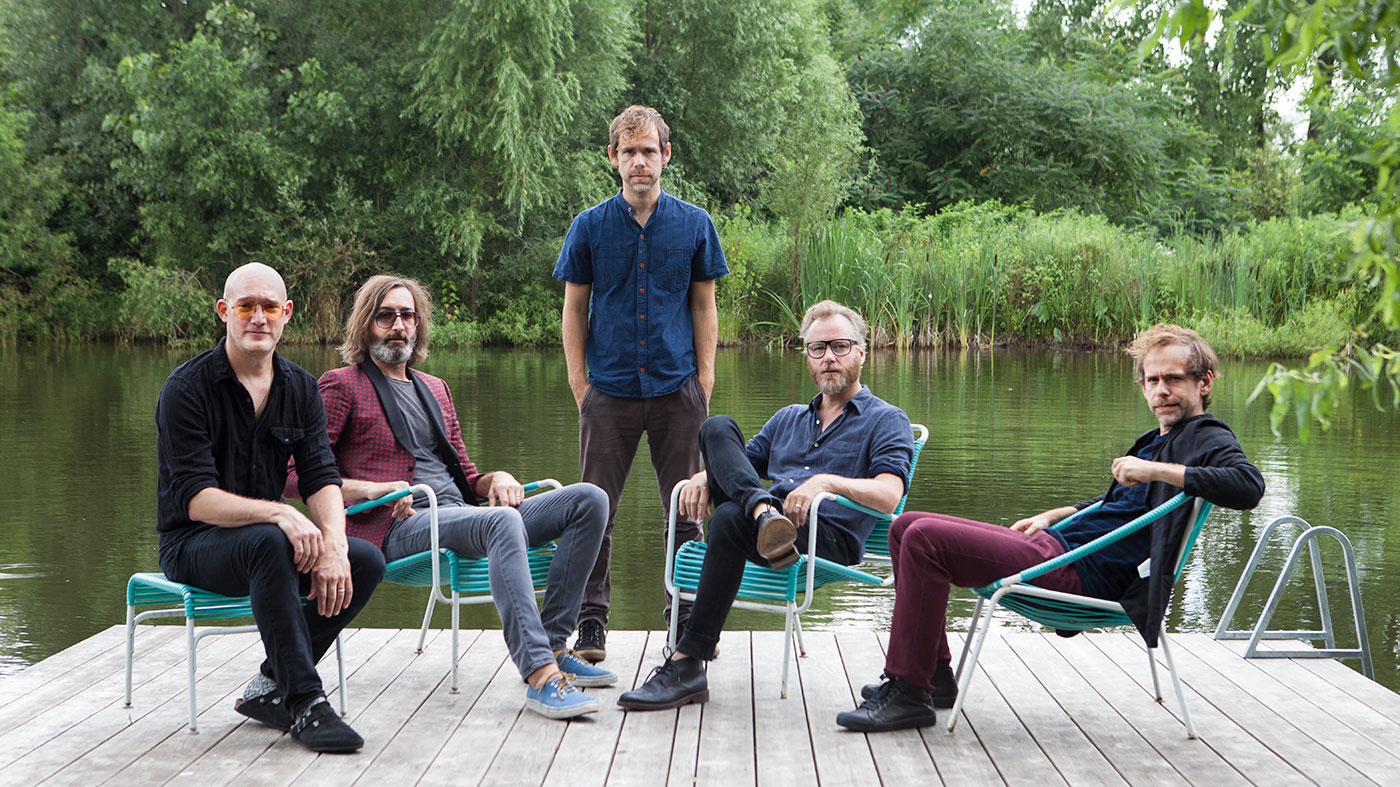
A space to call home
Some people believe tension very much benefits a recording…
“Yeah and I think that there’s a natural tension in certain songs. You hear it in Turtleneck or the Day I Day, which was recorded live in the room. But in my garage, it didn’t help us. The actual live room was like 250 square-feet and at some point, where we were as a band, it stopped being a space where we could comfortably be creative…
I’m not shy about it: we’ve earned it, we’ve earned the right to have our own space
“Also, we’ve been a band for almost 20 years, we must have played thousands of shows, so I’m not shy about it: we’ve earned it, we’ve earned the right to have our own space. We’ve raised millions of dollars for charities etc. I don’t feel bad about having a comfortable place to work, but it’s not like it’s super fancy, either. It’s still on a scale that I think is reasonable.”
This album was made over a long period, but in fairly intensive bursts. Did that make the atmosphere more challenging?
This music, maybe it’s the last National album, I don’t think it will be, but it’s important to put everything you have into something
“Yeah, the band would come for three weeks at a time and that was a good amount and sometimes at the end you would get cabin fever. We would do was these large group sessions where everybody’s playing all of the time and you’d have many takes and then I would have to go back and comb through everything and find the needle in the haystack. So having a year extra [was useful].
“I never felt pressure to finish it. That also comes with where we are as a band. If we know it’s even slightly better as a record because we took extra time, then it’s worth it, because you only get one chance. This music, maybe it’s the last National album, I don’t think it will be, but it’s important to put everything you have into something. If this was the last album, I’d be proud of it, because we didn’t make a shitty album, you know?”
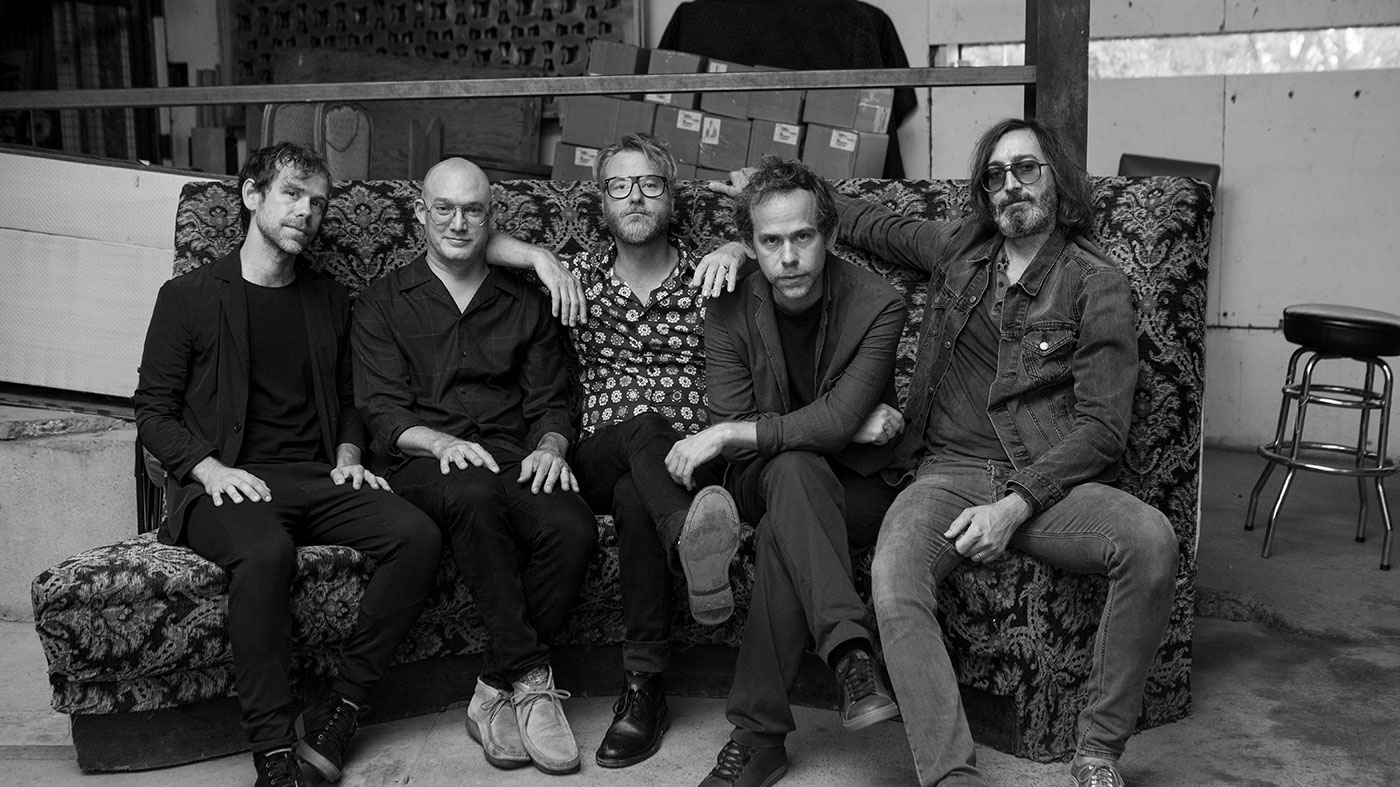
Solos and synths
What new discoveries did you make? Either in terms of the production process, or tools of the trade?
“I definitely went very deep with the OP-1 from Teenage Engineering, just as far as using the sampler and the synth engine and the drum machines and stuff. It’s a very mixable, transparent kind of sound and it really works, at least how we were using it. So you hear it a lot in the vocal samples and the drum textures.
We didn’t layer things in the same way... we wanted to be able to hear if something was on and for it to have an impact
“Then Brian was using different drum machines, but using them with various pedals, through amplifiers, playing along at the same time and recording that as a sound. So I guess on the whole there was a lot more ‘production’.
“In addition to that, we didn’t layer things in the same way. That’s partly because we were working in this amazing studio space with these beautiful ATC SCM45 monitors and you could really hear what was there, so I wouldn’t keep adding. Sometimes in the past I would create this really dense fog of texture that I would enjoy, but this time we wanted to be able to hear if something was on and for it to have an impact and be able to tell what it was. It ranges in everything from very organic to very synthetic, but the experimentation is soulful. There’s a heart to it.”
There are a lot of guitars in disguise on the album. What’s your favourite ?
“The guitar solo in the middle of Sleep Well Beast is just this old, late-60s Telecaster played direct into a late-50s Fender Champ. The guitar is just tuned to the notes of the sort of canon of the piano - it’s basically D major, but these intervals circle each other - and it’s really just me freaking out to it. I thought I would just try it, but then you can just feel when it’s magic.
If we were going to use a guitar, we went for something that was razor-y, like The System… or direct and pointillistic, like Born To Beg
“There’s quite a lot of direct guitar, too. In general, if we were going to use a guitar, we tried to be not using a lot of distortion or the woolly sound of the past. We went for something that was more either razor-y, like The System… or more direct and pointillistic, like Born To Beg.”
Speaking of The System Only Dreams In Total Darkness, obviously, we’re contractually bound to mention the guitar solo. Why did that one pass the test?
“I can’t even remember when I played it, to be honest. I know that it was my 1963 Jazzmaster into that same Fender Champ from the late-50s and again, just direct in and the amp turned all the way up and I was on the brightest pickup. I probably just forgot myself enough to get into that mood and just play in a way that had a kind of lyrical phrasing to it. I often think about Jerry Garcia - a lot of times he’s hovering around the same note a lot more than you think. That was maybe what I was trying to do - to not cram a million notes into there and just to give the song some sense of catharsis. It was Bryce who heard it and was like, ‘That’s got to stay.’”
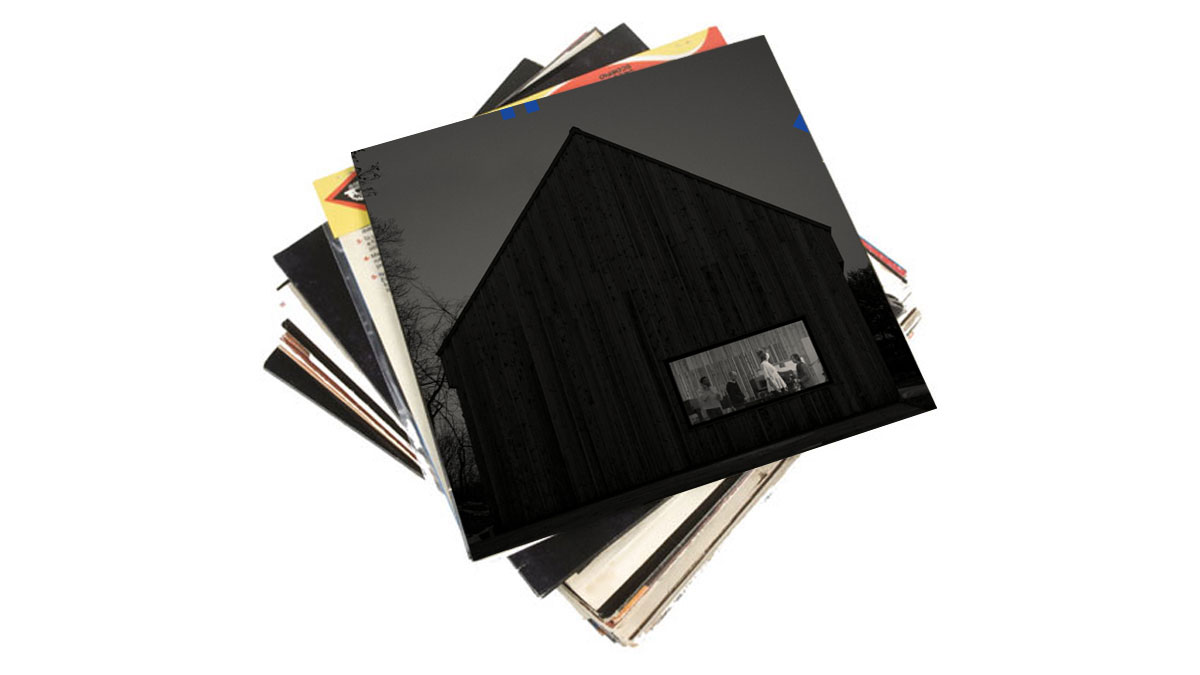
Lullabies and goodbyes
The National are a band that have made a success of channelling vulnerability into cathartic songwriting. Mostly though, as the lyricist, we hear about Matt’s vulnerabilities. Where do you think we hear yours?
I’m embarrassed by certain things being overly emotional, but the songs that Matt gravitates to have a very direct quality
“Well, it’s hard for a National song to exist if it doesn’t feel like it has a purpose and meaning before there are lyrics, because Matt doesn’t write the lyrics until the very end. A lot of times I’m embarrassed by certain things being overly simple or overly poignant or overly emotional, but the songs that Matt gravitates to are the ones that have a very direct emotional quality to them.
“They are very personal. Like Carin At The Liquor Store, that music I wrote and I played for my mother-in-law in the hospice before she died and then I played it at her funeral - and she knew I was going to. And then it became a National song. Or like About Today. That was a song I used to play for my ex-wife when she was feeling down - and then it became a National song.
“Or I Need My Girl is literally the song that, six years ago, I would play when I put my baby daughter Ingrid to sleep. I just wrote it for her as this little circular thing, but then Matt heard it and was like, ‘I want to write something to that’. So a lot of the music is intensely personal to me.”
In Mistaken For Strangers you say that “The most stressful part is before you have an idea. Once you have an idea, the making of the thing is really fun.” Was this record fun?
There’s moments when Matt and I have tension... We're trying to marry our music to his lyrical musings - and they don’t always end in the same place
“Yeah, it was fun. All these different experiences - whether it was the band camping out in upstate New York, or doing all these different crazy sessions in the Funkhaus in Berlin, the old East German radio building, or mixing with Peter Katis and drinking whiskey around the fire late at night - it was fun to make. There’s moments when Matt and I have tension, just because we’re trying to marry our music that’s gone down these deep rabbit holes to his lyrical musings that have gone down deep rabbit holes - and they don’t always end in the same place. There can be tension while you’re sorting that out, but it was really just a few things. So this was fun to make and there was no shortage of ideas this time.”
If you had to boil the experience down to one image that will stay with you, what would it be?
“I think it would be when Matt and I re-recorded Carin At The Liquor Store and Born To Beg maybe in November/December 2016. By then he had written the words and we were just playing them in the studio with the headphones on and you could just feel that at that point they were songs. It just felt like, ‘This album, it exists’. Everyone was feeding into that. Everything started to come together then.”
Matt is a freelance journalist who has spent the last decade interviewing musicians for the likes of Total Guitar, Guitarist, Guitar World, MusicRadar, NME.com, DJ Mag and Electronic Sound. In 2020, he launched CreativeMoney.co.uk, which aims to share the ideas that make creative lifestyles more sustainable. He plays guitar, but should not be allowed near your delay pedals.
